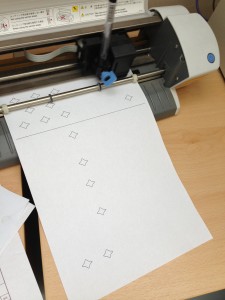|
 I have a commission in for a set of hand made Tudor-age playing cards for use by a re-enactor with a high-class persona. Essentially, these will be a prop to show the public, as well as a useable deck. They have to resemble the original cards on inspection, and hold up to light play. I have a commission in for a set of hand made Tudor-age playing cards for use by a re-enactor with a high-class persona. Essentially, these will be a prop to show the public, as well as a useable deck. They have to resemble the original cards on inspection, and hold up to light play.
A little work uncovered several possible methods of making cards. To keep them opaque, a thick brown card was used in the middle with thinner white sheets front and back for painting. Early cards were plain backed, meaning that there were no possible errors in printing to mark them. They were square cornered thanks to the cutting technology of the time. The style I am making was printed and stencilled for the relatively cheap decks, but others could be gilded and hand drawn and painted, depending on expense. The brief we agreed was for hand drawn court cards with stencilled pip cards. That left me with two knotty problems; I needed to make the card stock itself, and I needed to have working stencils.
I found a vinyl cutter that was looking lonely, and cut out some test pieces. The picture here is of a pen attachment, which I used to test what the cuts would be. I spent half a day working on pip design and layout, so that I can easily print. The half day spent learning the basics of a vector drawing program did not get factored into the rate, but the costs of the vinyl will be under expenses, so I have a responsibility to minimise that. I can fit the pip cards into 5 sheets of A4, at eight per sheet, and the question is only about stencilling/gluing order. The obvious thing to do is to stencil first so as to save card stock if it all goes horribly wrong.
The current state of things is that I need to print a lot and design a lot, but the project is underway.
|